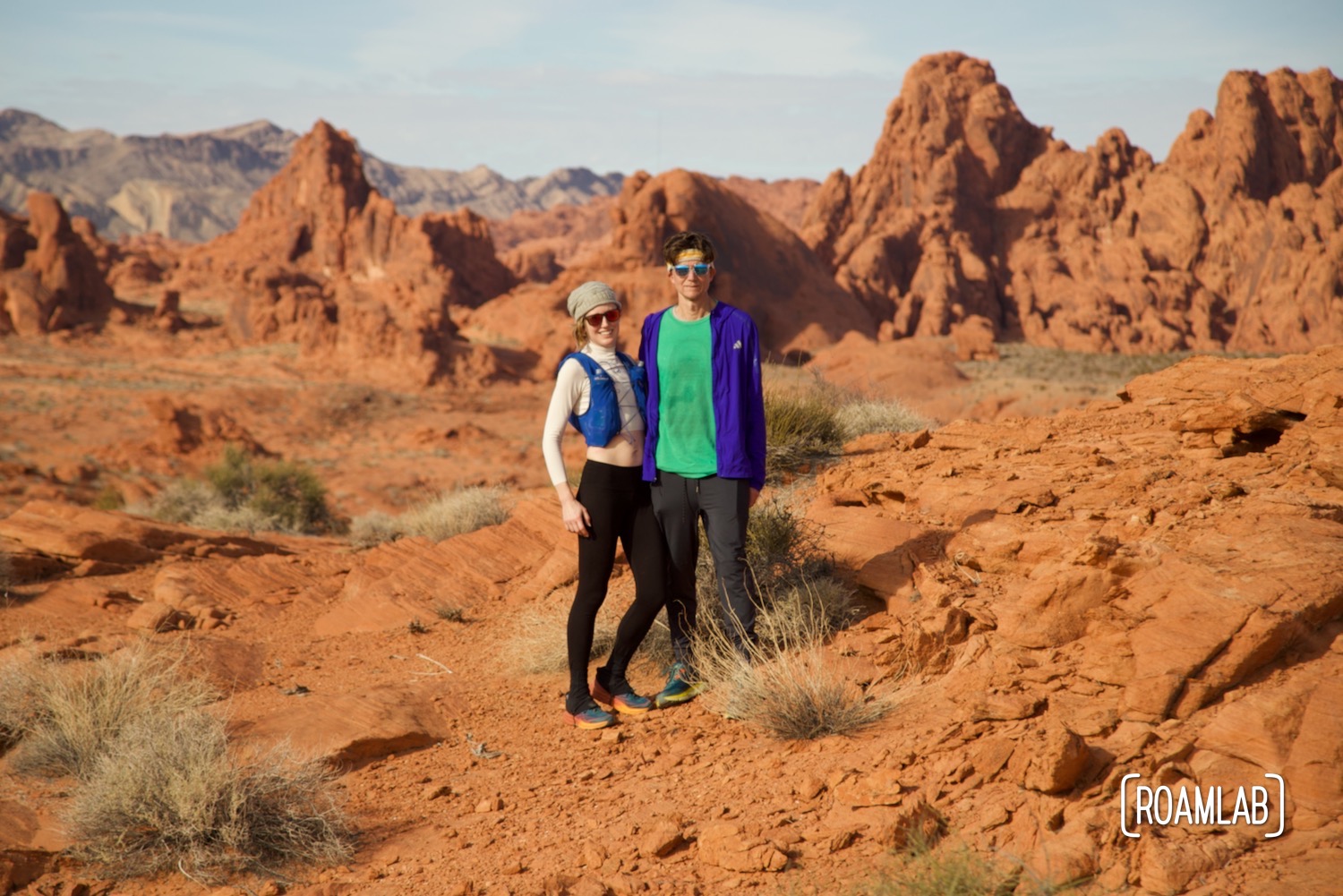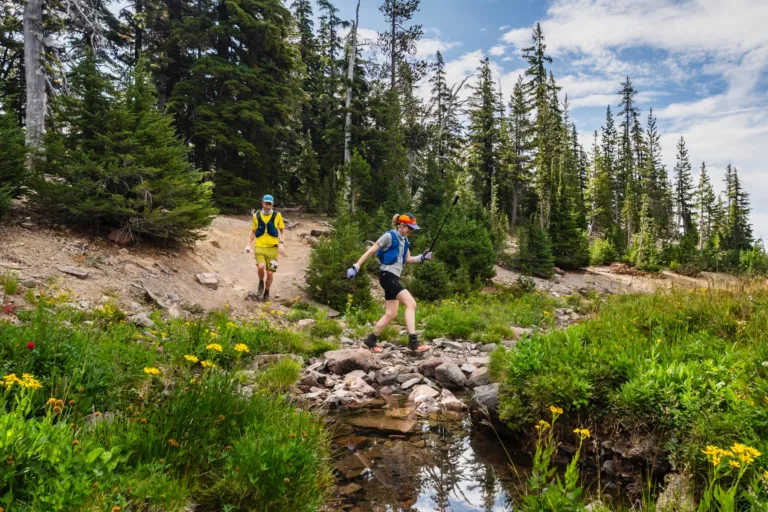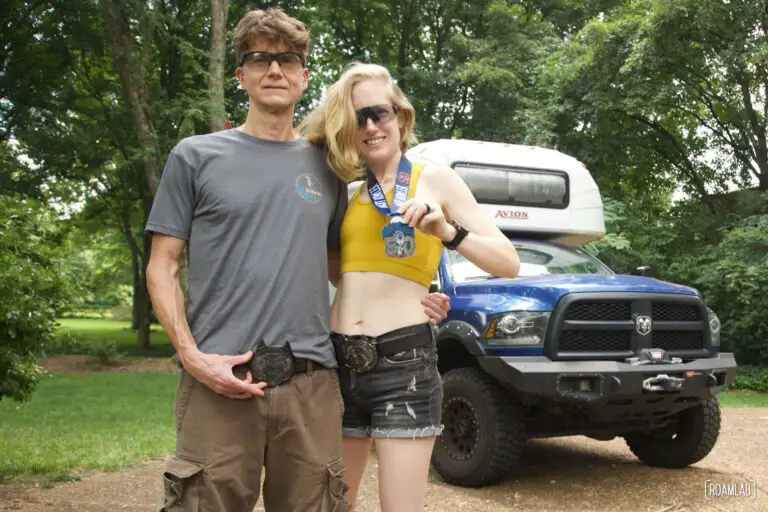Trail running has exploded in popularity, offering a refreshing alternative to the pavement pounding of road running. Along with this rise in popularity has come a surge in gear specifically marketed toward trail runners. But when does this gear benefit your run, and when is it just an expensive gimmick? Let’s break down the essentials from the unnecessary.
Sidenote: While much of this piece is about trail gear you don’t need, I have included links to some of the gear that we use. Maybe it will be useful to you. Maybe not. These are affiliate links. So, if you’re inclined to support us, an easy way is to shop through these links.
Must-Have Trail Running Gear
So often, before we even try a new activity, we go shopping. Trail running, like so many sports, can get expensive fast. While professional athletes can sport thousands of dollars worth of gear, the entry cost of trail running can be quite low. And you probably have everything you need to get started: sneakers and some comfortable gym clothes.
It doesn’t take much to get a taste of trail running, especially if you’re exploring a mile or two of dry, reasonably level dirt park trails. After some experimenting, of course, we all recognize that to tackle longer distances, more demanding terrain, and more challenging environments, we will have to start investing in specialized gear. But some will make a more significant difference than others.
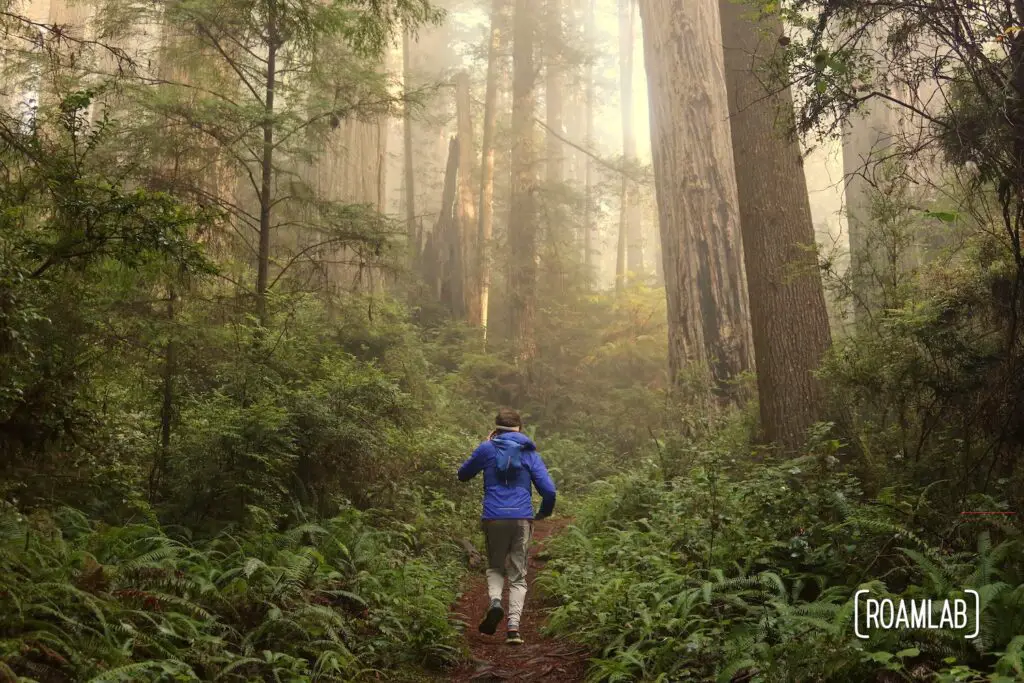
Trail Running Shoes
Unlike road running shoes, trail running shoes offer extra grip (usually with lugs), foot protection, and durability designed to handle uneven, rocky, or muddy terrains.
- When to buy: If you’re regularly running on trails, especially technical ones with roots, rocks, or steep inclines, you’ll want shoes explicitly designed for the job.
- When it’s a waste: If you’re mostly sticking to well-groomed paths or smooth terrain, you might not need trail-specific shoes and can use your regular running shoes.
When it comes to shoes, more than any other piece of gear, the right pair will be personal. A popular first pair of trail shoes is the Hoka Speedgoat. They are available in most stores that carry trail running shoes. I ran my first ultra in Speedgoats, but these days, they are not a common choice for me. My favorite trail shoes are the Salomon Speedcross 5 GTX. I run almost every race in them. That said, Chis got a pair for himself and HATES them. He prefers the Hoka Stinson.
We each have several pairs of running shoes that we rotate between. Some are more cushioned, some are more minimalist to a better feel of the terrain. Pretty much all of them were bought on sale or slightly used.
Shopping for Running Shoes
I cannot recommend highly enough the value of going to a running-specific shoe store and getting fitted for your first pair. If none of the pairs feel quite right, go to a different running store and try there. Various stores have closer ties to specific brands and will have varying selections based on their clientele.
As you better understand what works for you, the internet opens up a shockingly expansive world of trail-running shoe manufacturers. I remain consistently impressed by the work done by RunRepeat to empirically test and report on running shoes, including trail runners.
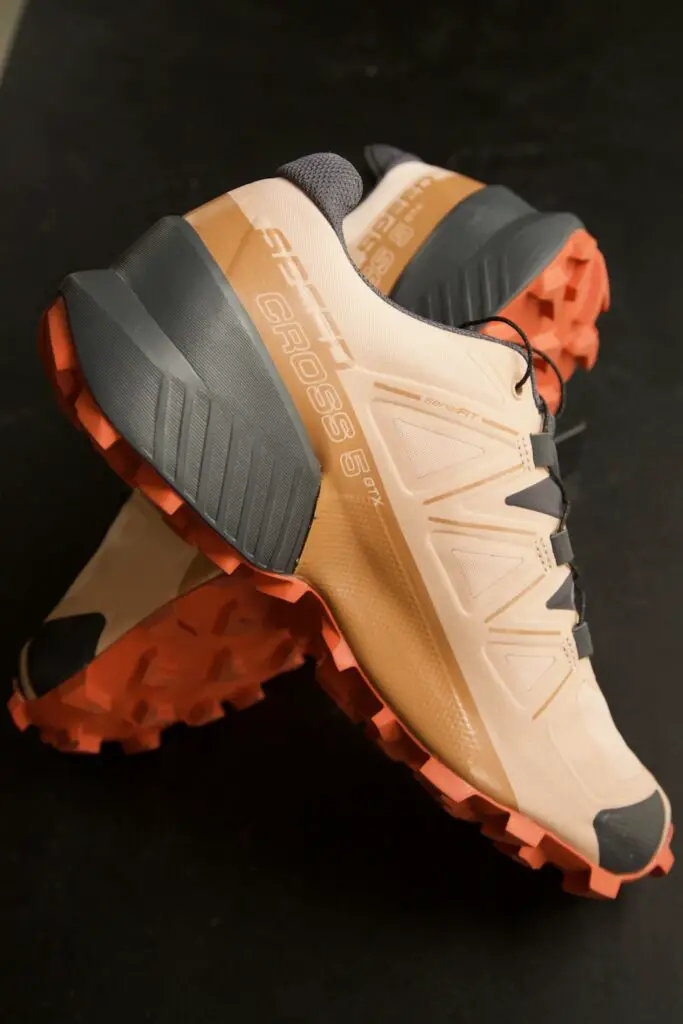
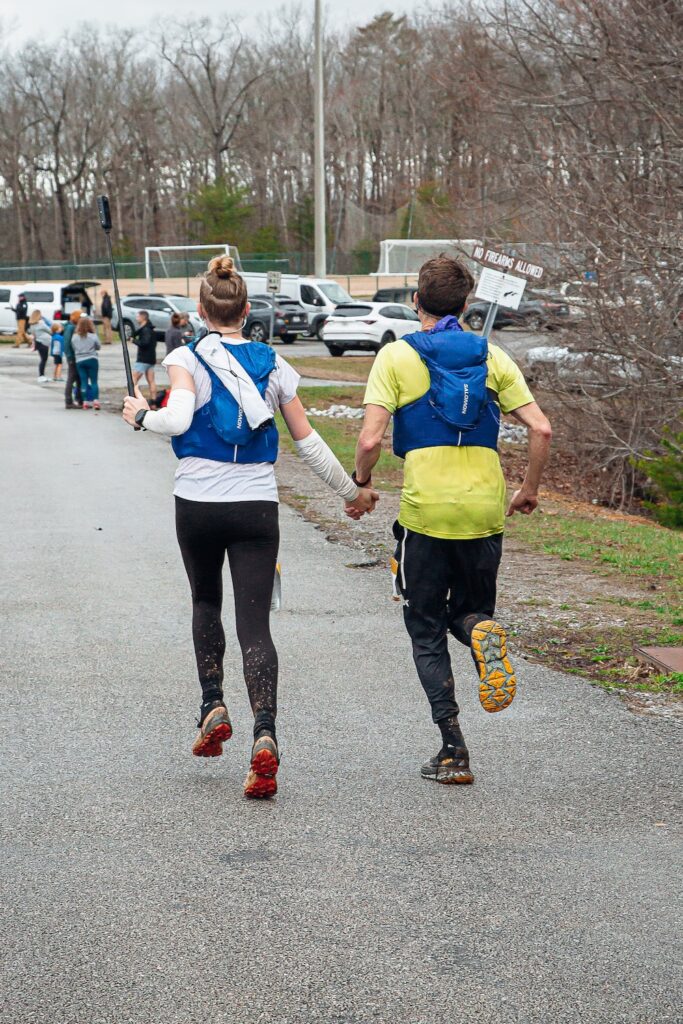
Hydration Pack / Belt / Handhelds
Hydration vests are having a moment on and off the trails. We see people wearing hydration packs, even at road marathons, often with a flask at each shoulder and storage in the back. These can be surprisingly expensive. The ultra-light materials, extensive modularity, and near-infinite pockets make for pricy investments. Like so many things, they can be very useful, but buying one is not a no-brainer.
- When to buy: For long runs with limited water access or if you’re running in hot, dry conditions. A pack can also double as storage for snacks, a phone, or safety gear.
- When it’s a waste: For shorter, well-maintained trails where water fountains or hydration stations are available, carrying a water bottle may be sufficient.
We bought our hydration vests for our first 50k. Up until that point, we ran with handhelds, a belt, or no water at all. After all, water is heavy, and a short run or one near water fountains may not require a personal supply. But once we were running 30 miles or somewhere remote, having extra water capacity and storage space for snacks and other gear became worth the extra weight and chaffing. Trust me, there will be chafing.
We opted for the Salomon ADV Skin 12. It’s a common choice among trail runners, with built-in 12 liters of water storage and an incredibly modular design. That said, one year in, and I’m patching holes and restitching seams.
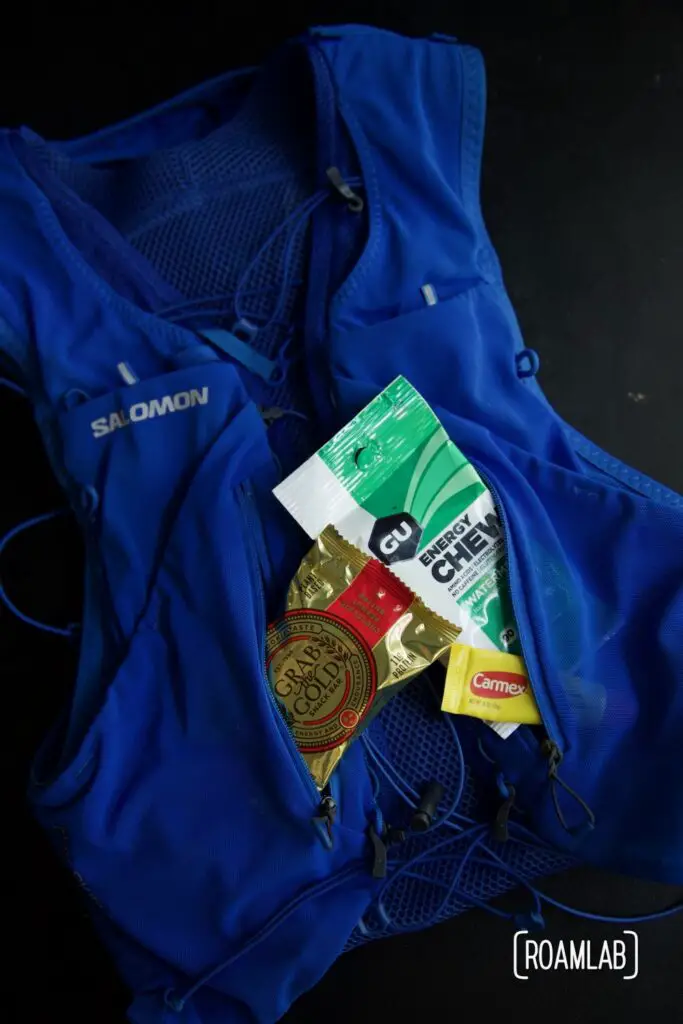
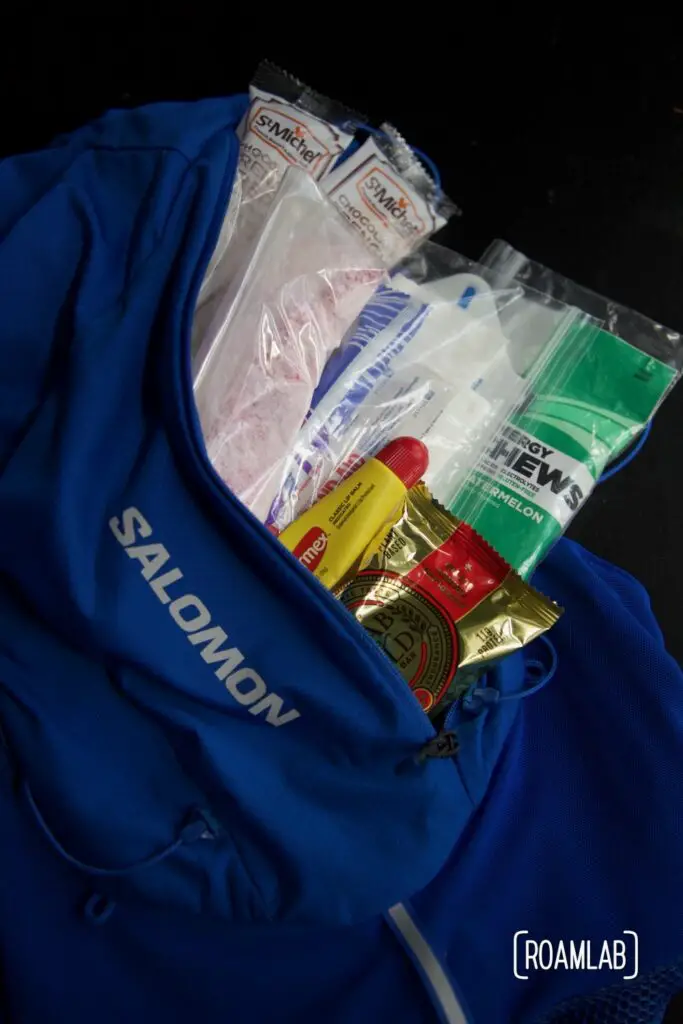
Nice to Have, But Not Essential
Gaiters
Gaiters keep dirt, rocks, and debris from entering your shoes, a real annoyance on technical trails.
- When to buy: If you often run on rough, sandy, or debris-laden trails, or if you find yourself frequently stopping to shake out your shoes.
- When it’s a waste: If your trails are generally well-groomed and free of loose rocks or sand, you can skip these.
In the world of trail running gear, gaiters are relatively inexpensive and can make a significant difference on trails with lots of debris. A basic, lightweight set with elastic under the shoe should be sufficient in most cases. To me, the greatest downside is the annoyance when I forget to put them on before my shoes or when I have to replace the elastic after many uses.
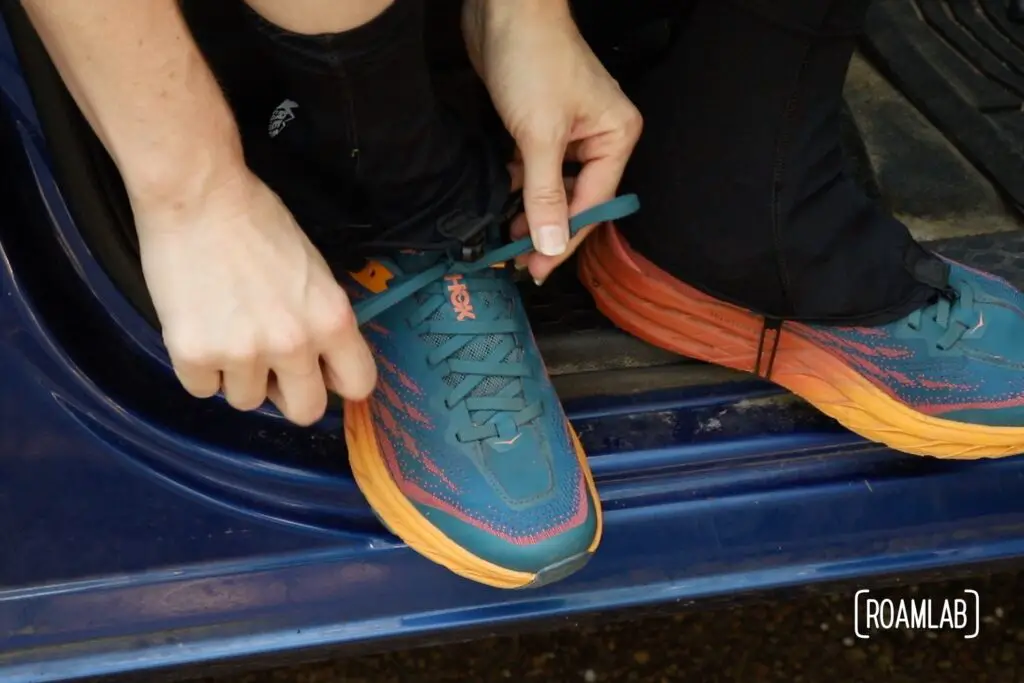
Trail-Specific Clothing
Clothing made for trail running often includes extra durability, storage, sun protection, and breathability or water resistance. While helpful, it’s not always necessary to buy trail-specific apparel.
- When to buy: For longer runs and unpredictable weather conditions, like rain, wind, or cold. These clothes can offer extra protection and durability.
- When it’s a waste: For fair-weather runners on short, mild trails, your regular running clothes will usually do the trick.
Clothing Optional
It’s the wild west when it comes to trail running clothing. Some men toe the start line of a race topless, in shorts, in the middle of winter. If anything, the tutus and other races’ costumes, like the Javelina Jundred, highlight that you can wear whatever you want.
But distance exposes the shortcomings of your gear. Rough seams, heavy fabrics, and poor sun protection can lead to avoidable chaffing, poor temperature regulation, and vulnerability to environmental factors. While your clothes do not have to be running clothes explicitly, they should cover certain basics:
- Sun protection: Long runs mean long periods of exposure to the sun. While sunscreen is a valuable tool, it sweats or rubs off and needs to be reapplied. Fortunately, there are shirts, hats, and other clothing items designed with sun protection in mind. The longer the race, the more critical this more resilient form of sun protection is.
- Wicking properties: Specialized running clothing is designed with technical fabrics to make it breathable and thick enough to wick away sweat. Whether it is a hot or cold day, a good shirt will make a huge difference in your body’s temperature regulation.
- Chaffing: Running clothing is designed with the expectation that you are constantly moving in it. That means specially hemmed seems, inner linings, and other considerations to minimize chaffing. On a short run, the difference can be minimal, but the longer you run, the more chaffing becomes a problem.
- Mobility: Clothing should not restrict your range of movement.
- Weight: The heavier the clothes, the more weight you carry over time.
- Pockets: when it comes to running clothes, pockets are one of the few reasonable flourishes. It’s hard to conceive of a scenario where one has too many pockets when on a long trail run.
Overall, training will expose when it’s time to look for trail-specific clothing. One of the first pieces of trail-specific clothing that most people get is socks. But there are a lot of types of socks that can solve different problems. As you run more, you may notice blisters at the sock seam. It’s time for some seamless socks. Or maybe your toes are chaffing against each other: time for some toe socks. Chis has done a lot of experimenting with expensive socks to mitigate his foot challenges. Me? I tend to run in generic sports socks from Cosco. They work for me, so I won’t overcomplicate my process until I need to.
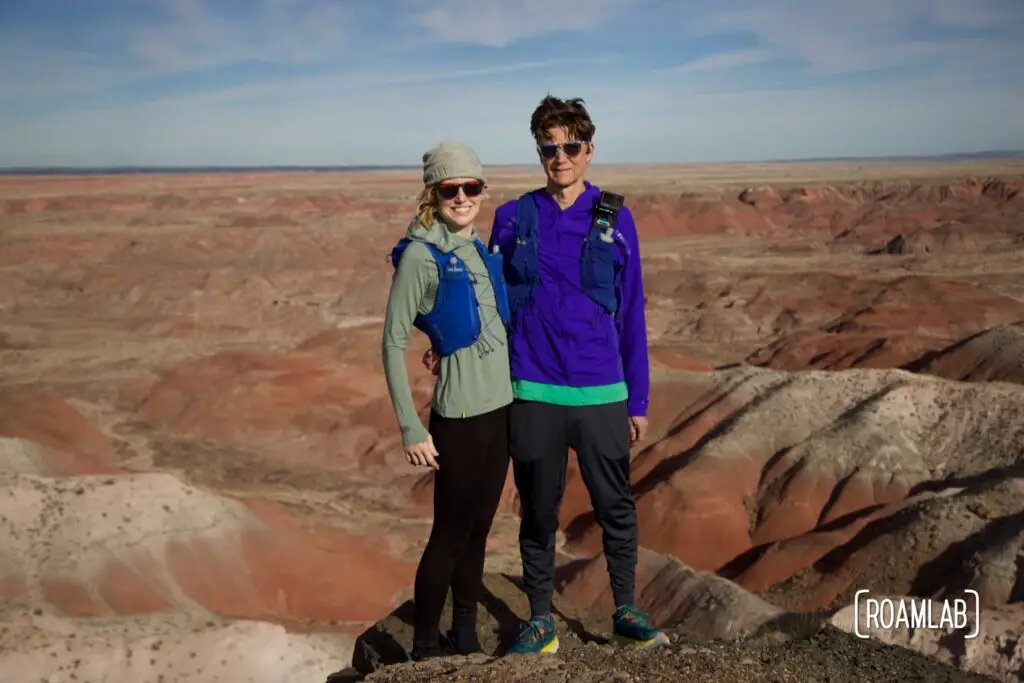
Sunglasses
Sunglasses can be crucial, especially when running in exposed areas or trails with varying light conditions.
- When to buy: If you frequently run on trails with significant sun exposure, like mountain paths, deserts, or open fields, a good pair of polarized sunglasses can protect your eyes from UV rays and help reduce glare. Wraparound sunglasses are a great choice for added protection against dirt, wind, and debris.
- When it’s a waste: If you mostly run in shaded forests or during times of day when the sun is low, sunglasses may feel more like a burden than a benefit.
In the world of running gear, I find running sunglasses to be one of the more obvious investments, yet they are surprisingly contentious. In the “no” camp, some runners find that sunglasses block the wind while running, so sweat accumulates around the eyes and can even fog up the glasses.
In the “yes” camp, sunglasses not only help protect runner’s delicate eyes from UV rays (yes, eyes need sunscreen just like your skin does) but also protect your eyes from dust, bugs, and branches, and other airborne harm. In the Long Hunter 50k, my sunglasses took part of the impact of my fall. I needed a new pair of glasses after but at least my face wasn’t very bruised.
That said, specialized running glasses are typified by their lightweight and anti-bounce design. After an hour of running, conventional sunglasses often slip off from sweat and bounce around uncomfortably. I’ve heard a lot of good things about Goodr, though I’ve often cheaped out with these generic glasses. Which, I guess offsets Chris’s fancy Tifosi Veloce transition lenses.
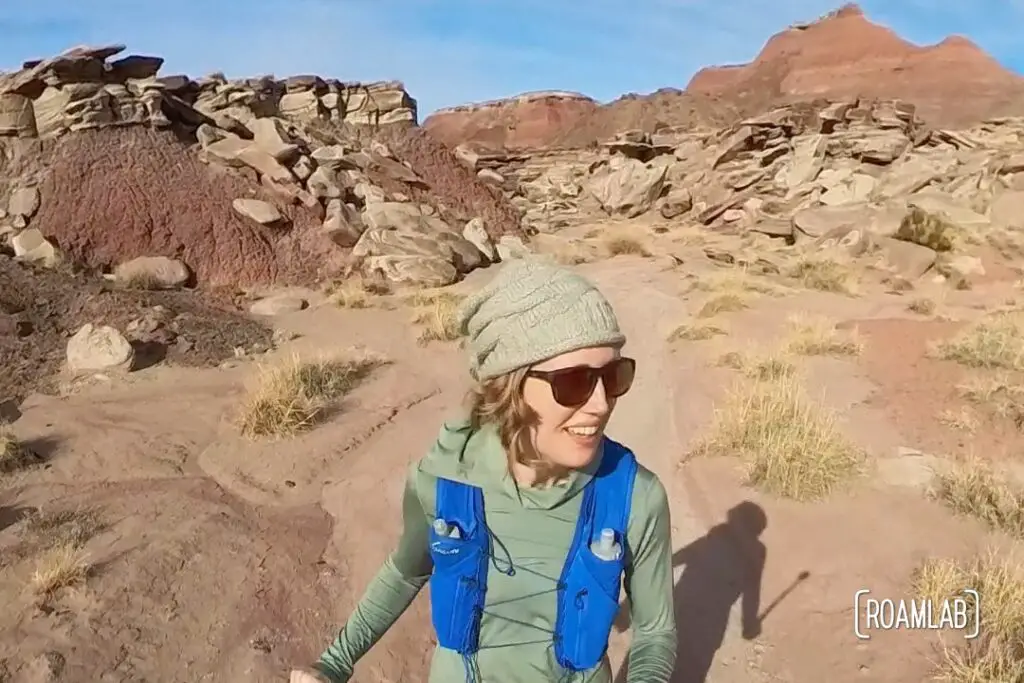
Hats
A good hat shields your face from the sun, helps manage sweat, and even provides warmth on cooler days.
- When to buy: If you’re running in hot, sunny conditions, a lightweight, breathable hat can help keep the sun off your face and prevent overheating. In cooler conditions, a beanie or headband can keep you warm without overheating your body. Hats with built-in moisture-wicking material can also help manage sweat that might otherwise drip into your eyes, keeping you more comfortable.
- When it’s a waste: If you’re running in mild weather or shady environments, a hat might not be necessary.
Running hats don’t protect eyes from airborne particles, but they can protect the whole face from UV rays. What makes the hat run-appropriate is its light weight, packability, sun protection, and sweat-wicking properties.
Honestly, I tend to wear both hats and sunglasses on longer runs since each provides better protection in different areas.
Gear That Might Be Overkill
Trekking Poles
Popular for ultra-runners and those tackling mountain terrain, trekking poles can help take pressure off your joints on steep climbs or descents.
- When to buy: If you regularly do long-distance mountain runs with extreme elevation changes.
- When it’s a waste: For most trail runners on rolling hills or moderate trails, poles are unnecessary and can be cumbersome.
Good poles for trail running are expensive. To be practical, they must be easy to deploy and lightweight. Entry-level poles are generally aluminum, but higher-end poles are carbon fiber for their lighter weight. It’s a bigger ticket item and only makes sense in long races and sustained climbs that justify the extra time it takes to deploy and stow.
I ran without poles in my first two races (Long Hunter & Stump Jump). Both were only 50ks, and Stump Jump banned poles altogether. It wasn’t until my third race, Chillhowee, that I started to appreciate why a person would bother to go through the extra trouble: after 20 miles of climbing, my lower back was incredibly stressed, and the poles allowed me to offload the work to less fatigued muscles. For our 100k at Silverheels, we made a point to integrate training with poles. I have a set of Black Diamond Carbon Z poles and Chris is enjoying the Leki Ultratrail poles.
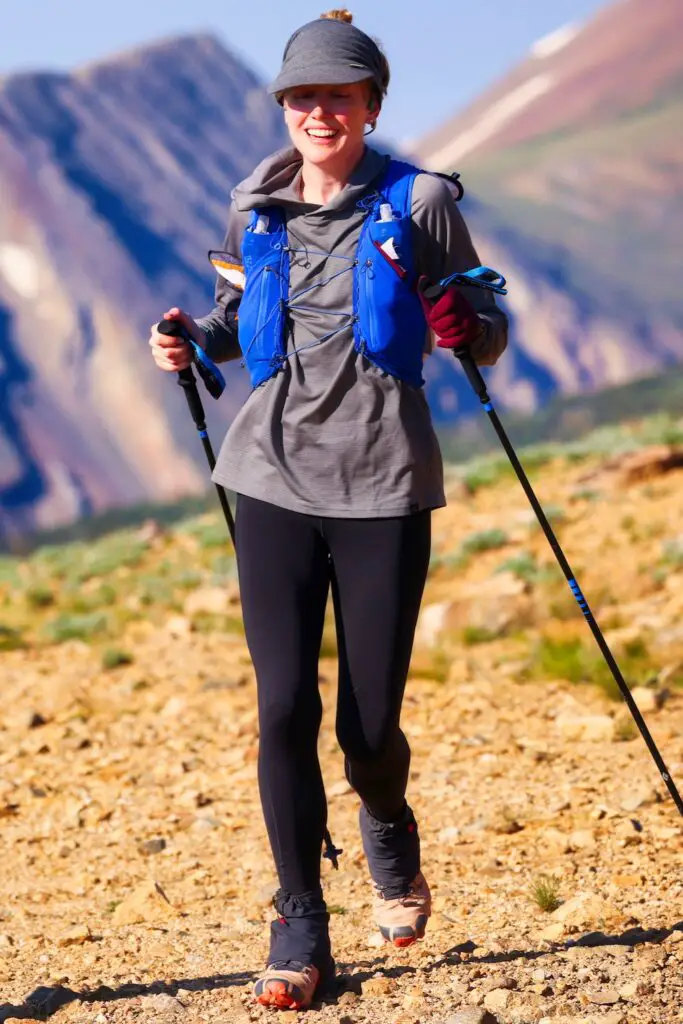
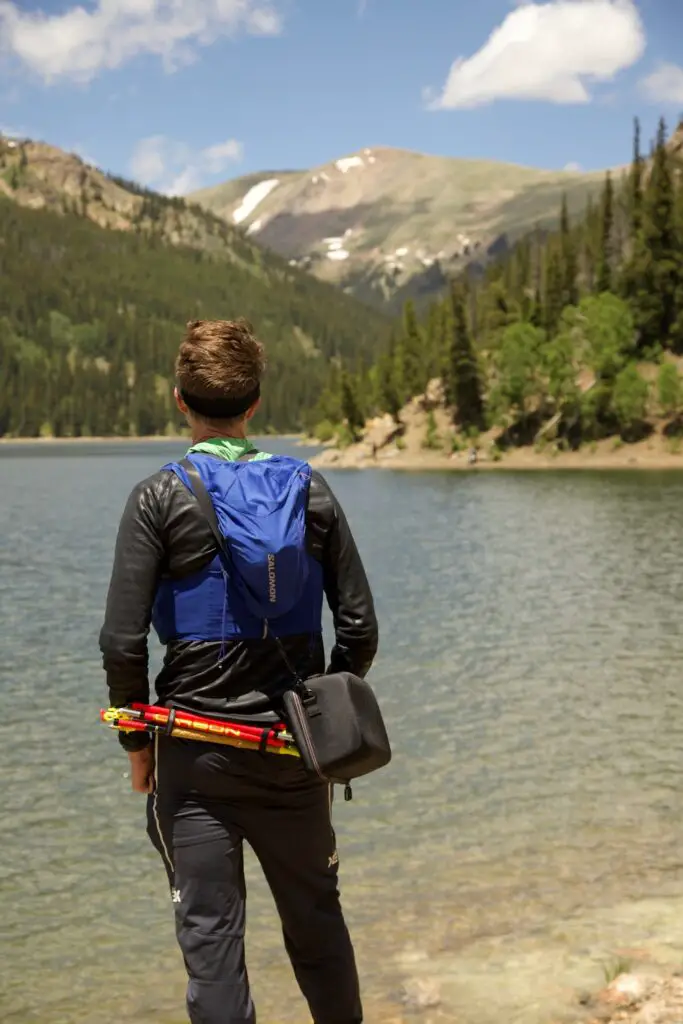
GPS Watches with Advanced Features
GPS watches have become increasingly high-tech, with models that track elevation and VO2 max and even provide maps and navigation. While these can be incredibly useful for some, they’re not for everyone.
- When to buy: If you love data, often run on unfamiliar trails, or plan to explore remote locations where navigation is key.
- When it’s a waste: If you’re sticking to familiar trails and can map your runs with a phone or simpler GPS device, you may not need all the bells and whistles.
Personally, I love my Garmin Fenix Solar, and Chris enjoys his Coros Apex 2. Both have strengths and weaknesses. We primarily use ours to track our training. Still, the integrated maps and navigation features have been a game changer for us after we got lost on several runs early in our trail-running exploits.
If not for the maps, I probably would have happily stayed with my Apple watch. Its deep integration with my phone made the Apple watch a fantastic general smartwatch, including its ability to track exercise and playback downloaded music or podcasts. Better yet, the fall detection did its job several times when I fell. Fortunately, I didn’t need aid, but it’s comforting to know that, had I experienced severe head trauma, I would not necessarily have to wait for someone else to find me.
Rain Jacket
Rain jackets marketed for trail running can be a surprisingly expensive piece of gear in your kit. These jackets are often designed to be light, packable, and breathable—perfect for long runs where the weather might change unpredictably. However, there’s usually a trade-off: a jacket that excels in breathability and packability likely won’t be fully waterproof, and one that’s completely waterproof may leave you feeling sweaty and restricted.
- When to buy: If you run in areas with unpredictable weather or cold rain, a good rain jacket is a smart investment. Look for jackets with adjustable hoods, breathable panels, and a close-fitting design to prevent flapping in the wind.
- When it’s a waste: If you live in an area with a dry climate or are a fair-weather runner.
Here’s the thing: if you run enough, you’ll get wet. The question is just how much moisture is water and how much is sweat. In most cases, rain gear tends to be a hat to keep your face dry and maybe gortex shoes. When a jacket comes in handy, it has less to do with wet and more to do with cold. On long races that stretch into the night or very cold environments, runners may reach a point where even the extra heat generated from running is not enough to combat the elements, or periods of hiking bring the core temperature down to a point where a runner needs extra layers. We had no real use for specialized running jackets until we reached the 100k distance in the Colorado Rockies. Even so, I only wore my Patagonia Houdini for the first three miles. After that, it was a very light but expensive token of peace of mind.
Trade-off Reminder: No jacket can be perfectly breathable and fully waterproof simultaneously. It’s about finding the right balance for the type of trails and weather conditions you encounter.
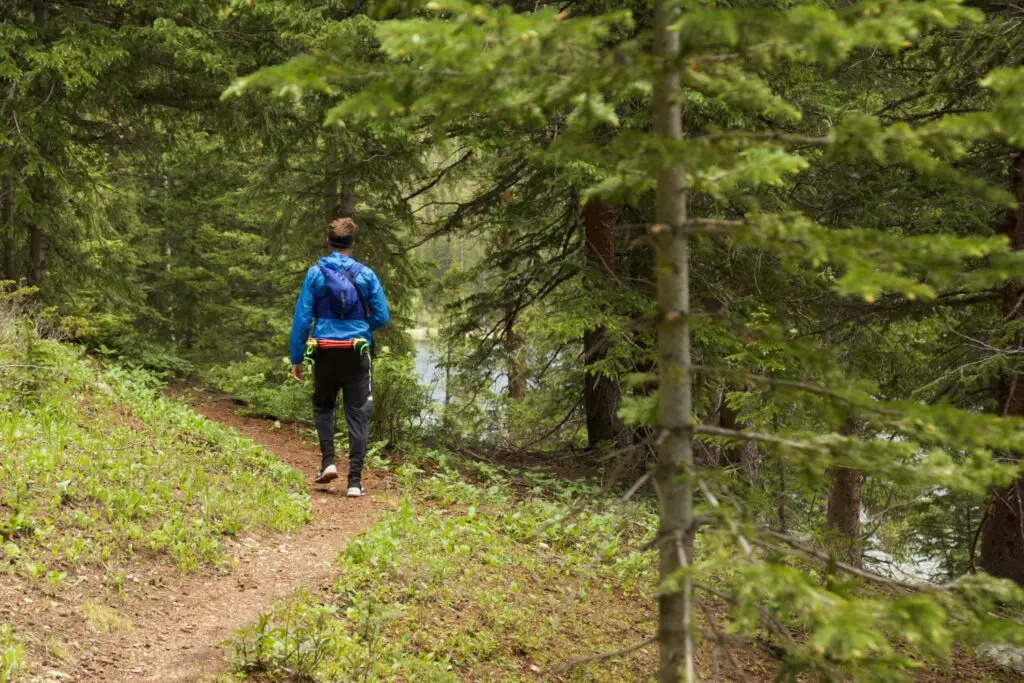
There’s so much more
Of course, this isn’t comprehensive. We’ve picked up additional gear as the need arose. We bought headlamps once we signed up for a race with a 4 a.m. start (we also finished in the dark). We have tested out a few pill-carrying solutions for our Tylenol, salt pills, and other interventions that become more of an issue at longer distances. What you need will become clear in the course of your training.
In the End, It’s up to you
When it comes to trail running gear, it’s easy to get swept up in the excitement of new products. However, most runners only need a few key pieces of gear to get started. Think about the trails you’re running, how long you’ll be out, and what conditions you’ll face. Invest in the essentials, but remember that your legs are the real engine behind every great trail run—no amount of gear can replace good training and preparation.


